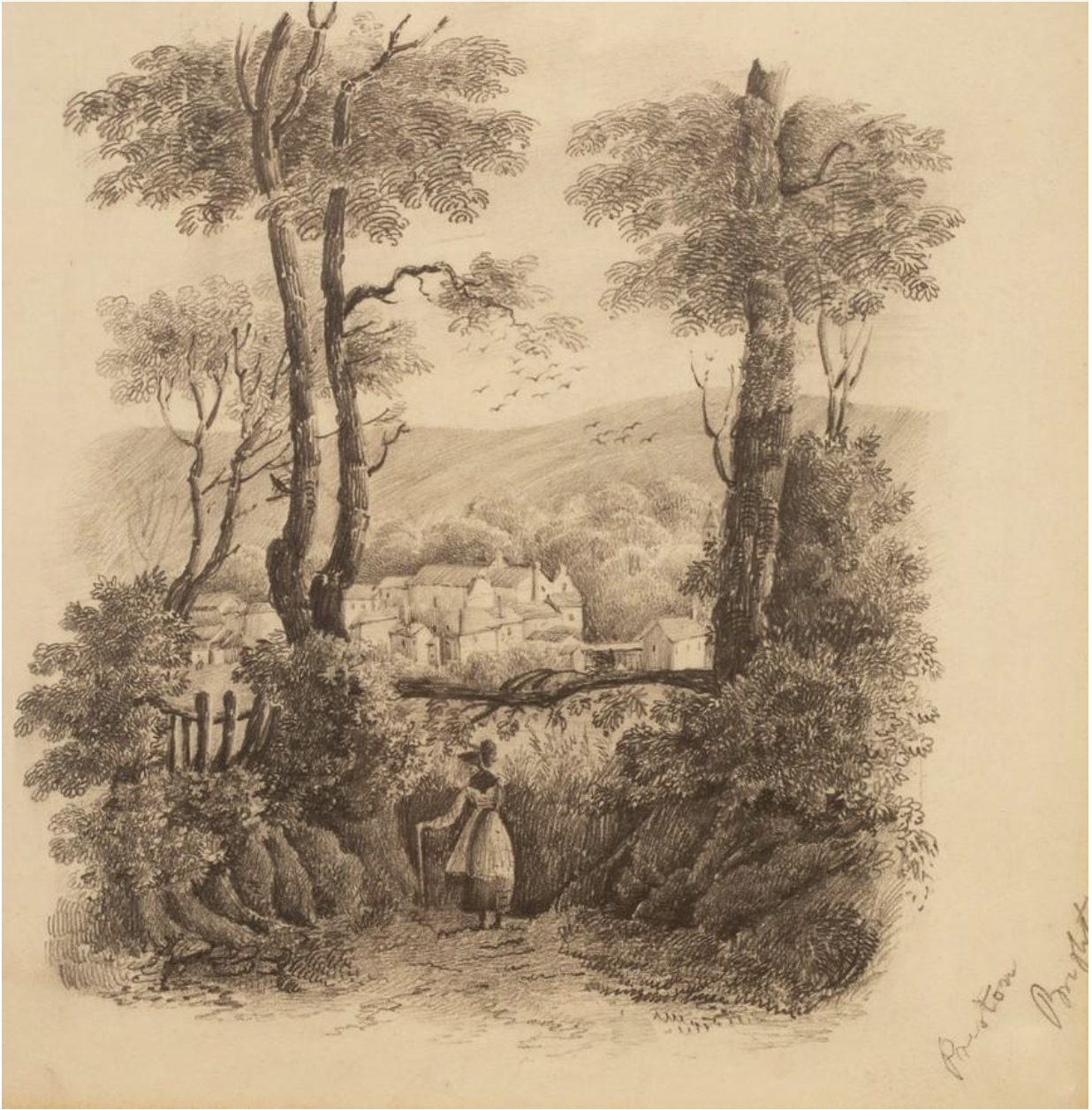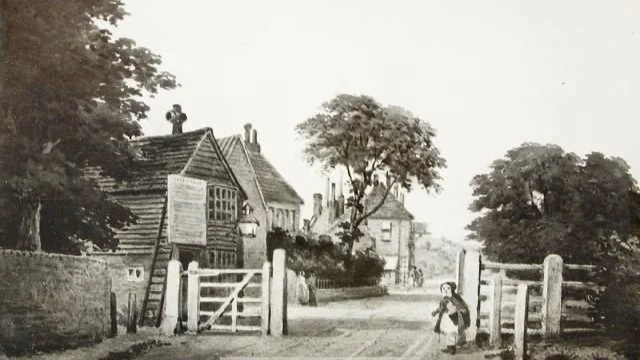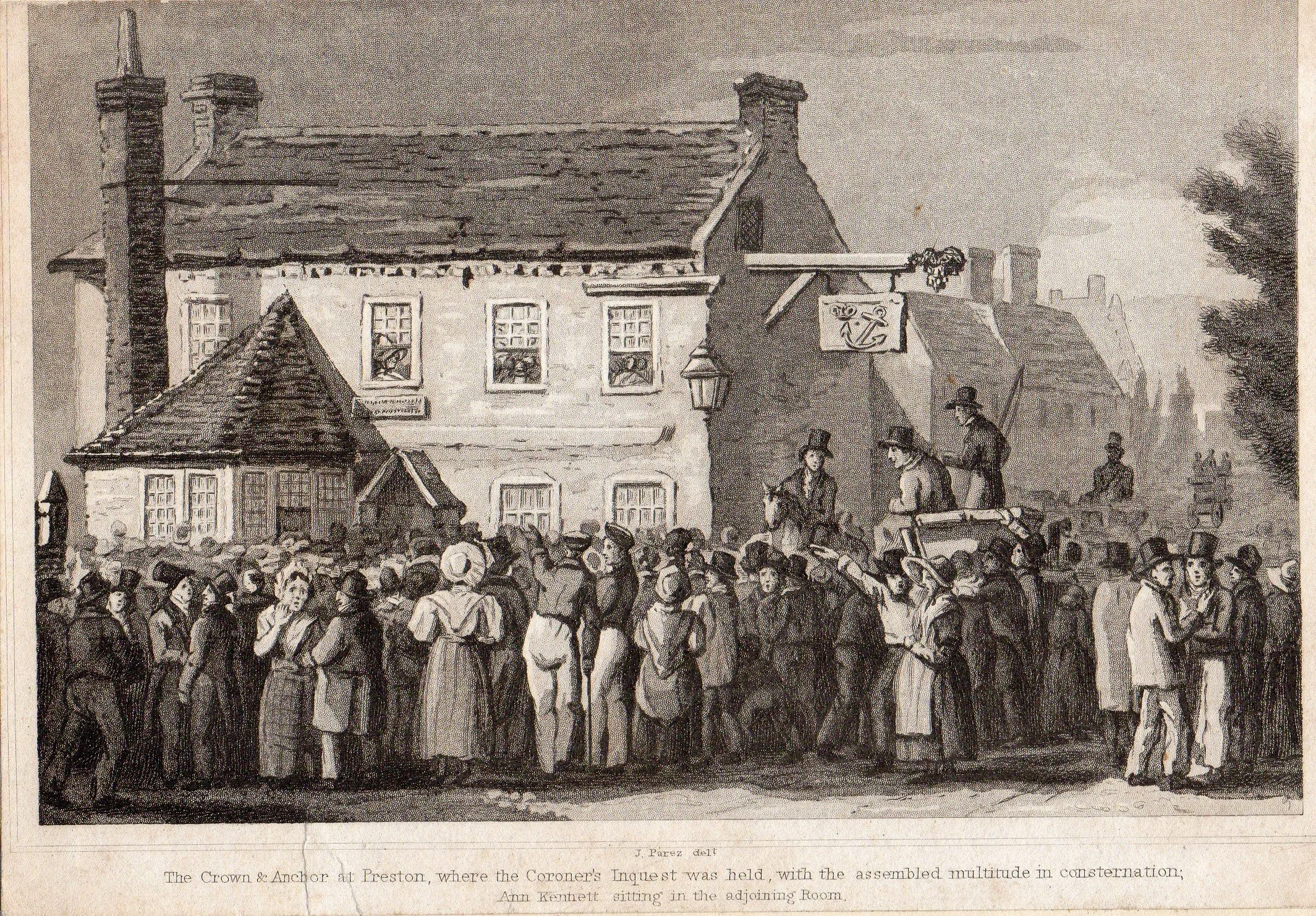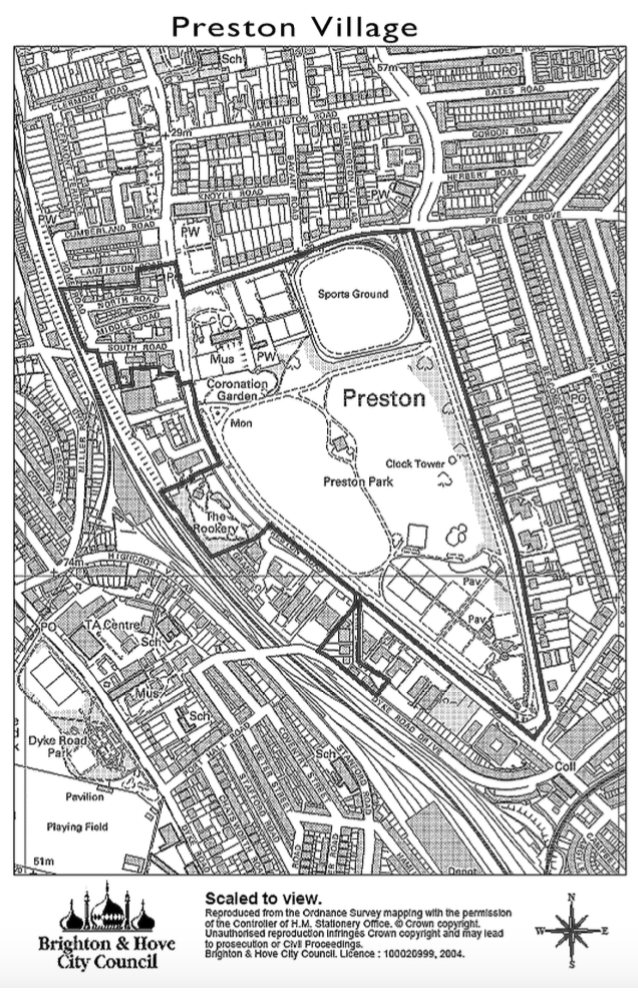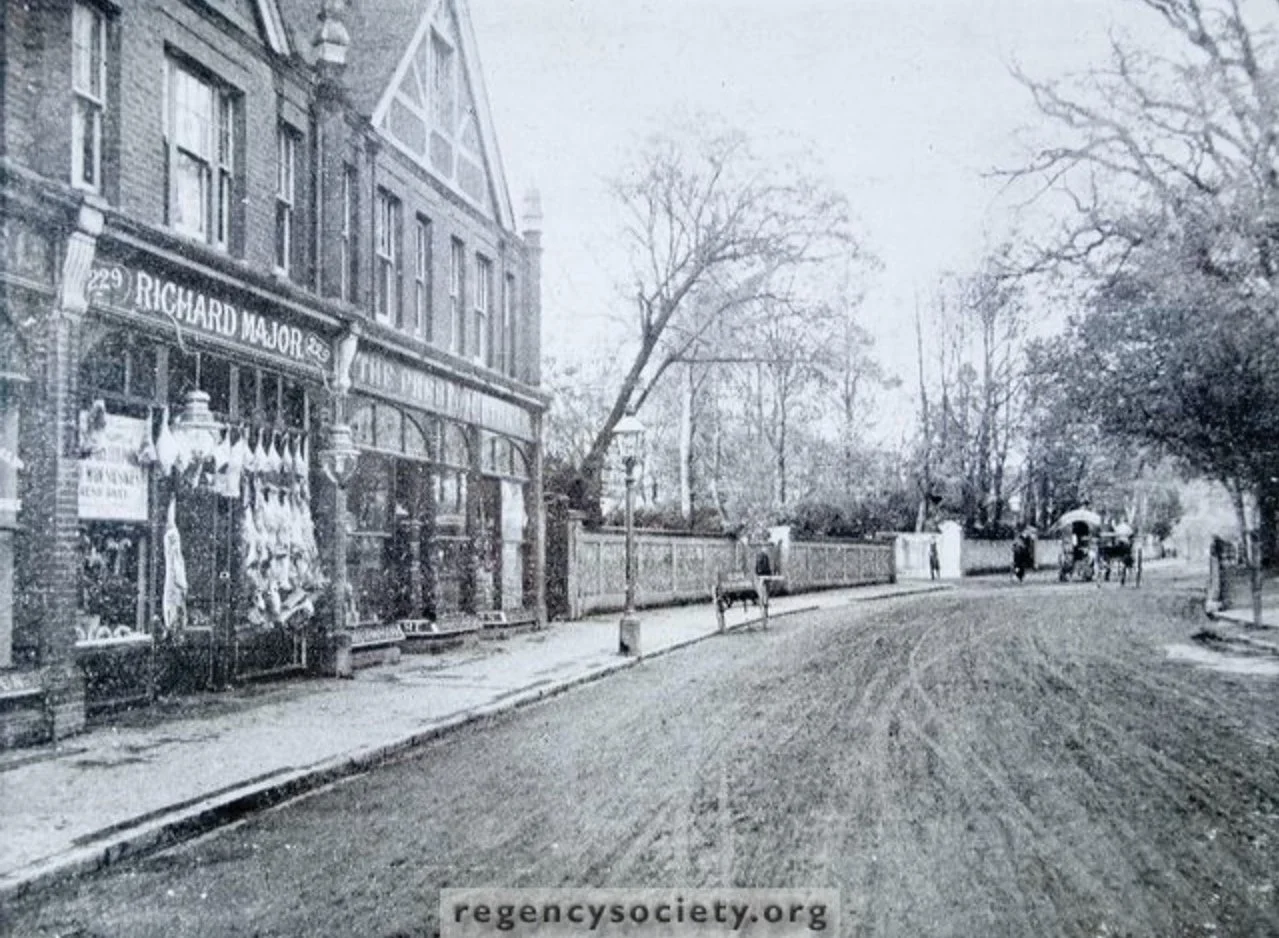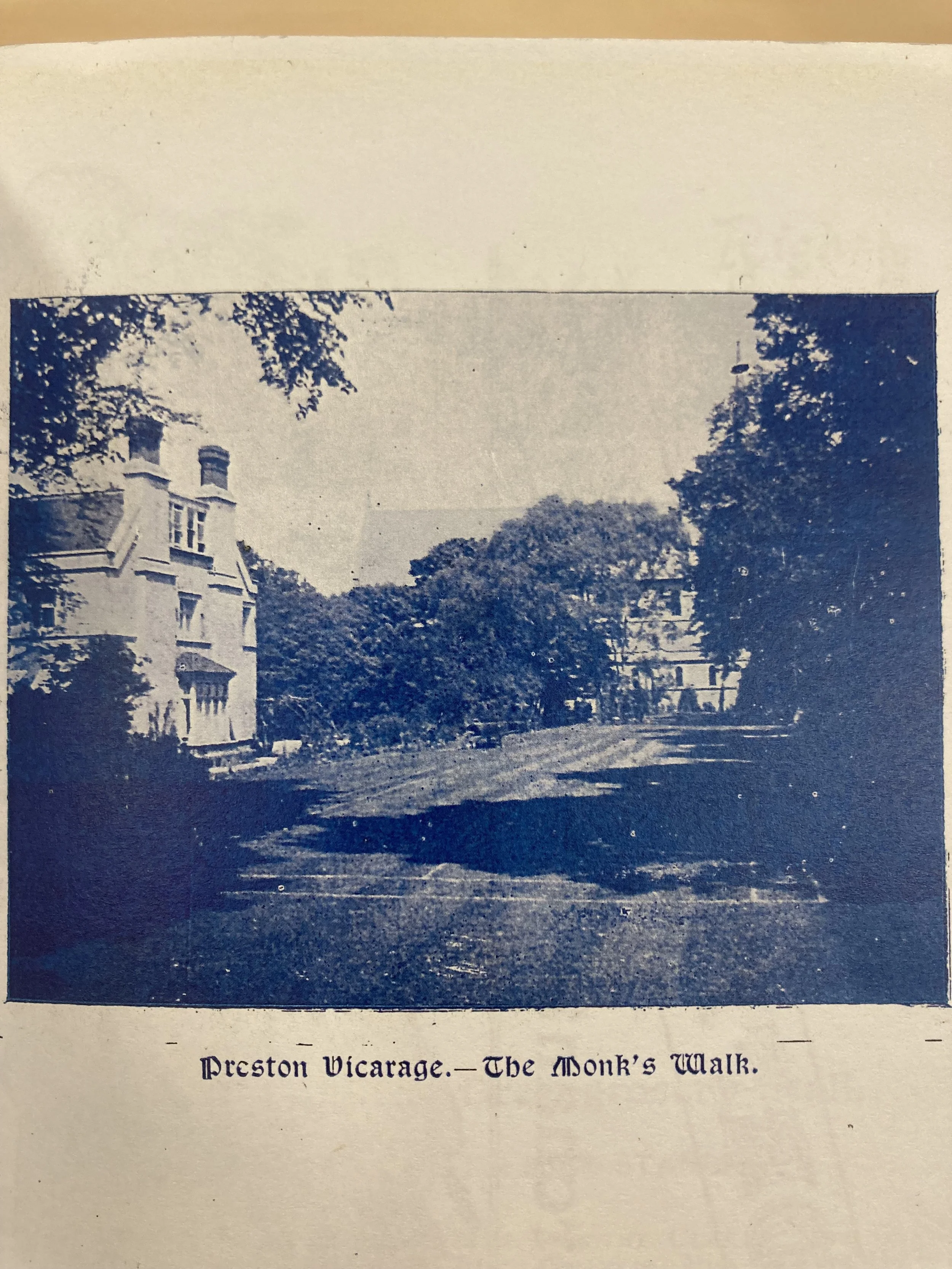
The Manor House, Preston Place, East Sussex by James Bennett, 1845. Image Credit: B&H Museums.
Nestled among rolling fields and open downland, Preston was recorded in the Domesday Book of 1086 as "Prestetone," meaning "priest’s farmstead"
An image of Preston Village from 1830. The image appears to be drawn from the perspective of what is now Millers Road, looking to the East.
At that time, Preston Village was a small settlement separated from Brighton by open farmland, with fewer than fifty people, a church, and a mill, under the control of the Bishop of Chichester.
By 1230, the Archbishop of Canterbury had stayed in the village, highlighting its early significance and for centuries, Preston Village remained a quiet, self-sufficient farming community amongst the fields that stretched towards the south downs.
St Peters church which stands immediately to the east of Preston Manor is built of flint with stone dressings, and consists of a nave, chancel and western tower built in the 1200’s.
The quiet village was situated in the valley of the Wellesbourne, a seasonal stream that once flowed through to Brighton but was gradually drained in the 18th and 19th centuries.
Preston Village was at the heart of the Preston Parish, which stretched from Aldrington in the West to Bear Hill in the East.
By the 1800s, Brighton’s rise as a fashionable seaside retreat made Preston Village, with its narrow lanes and cottages set against a backdrop of farmland, a haven for excursionists. The village was known for its Tea gardens between Middle Road and North Road which drew tourists from 1770 to 1815, offering a picturesque escape just beyond Brighton’s expanding urban limits.
But by 1801 Preston Village was recorded as home to just 222 people. 10 years later a turnpike gate was installed on the busy London-to-Brighton road in order to collect tolls.
The turnpike remained in place until 1854, marking the role of Preston Village as a waypoint for travellers.
An image of the turnpike toll gate near South Road in Preston Village, in place from 1810 - 1854. The Shell Petrol Station now stands to the left of the image.
Many thanks to the Regency Society for the use of this image of the Crown & Anchor in 1831.
You can see the whole of the James Gray archive at regencysociety-jamesgray.com
In 1871, Preston Village attempted to establish local governance, but the secessionist effort was unsuccessful and by 1873, Preston Village was formally incorporated into Brighton. The opening of Preston Park Station in 1875 further connected the village to the city through its expanding transport network.
The Crown and Anchor pub, dating back to at least 1711, was the first stop for coaches from Brighton. The pub was rebuilt in 1894. The etching below is a scene of the pub in 1831, during an inquest concerning the death of Celia Holloway, a lady who was found dismembered in Lovers Walk to the south of Preston Village.
Many thanks to the Regency Society for the use of this image of the Crown & Anchor in 1831.
You can see the whole of the James Gray archive at regencysociety-jamesgray.com
In 1970, the distinct built environment in Preston Village earned its designation as a protected Conservation Area.
The oldest streets in Preston Village are home to some wonderful examples of traditional Sussex flint architecture of different periods. The Preston Village Conservation Area Character Statement written in 2005 describes the scene;
“South Road features a fine collection of Grade II listed buildings, of which Nos. 7, 9, and 11 were built in 1907 as the Stanford Estate Offices by architect Charles Stanley Peach. These were adjacent to Little Barn and Mulberry Cottage, built in bungaroosh and flint, and a two-story farmhouse dating back to 1636.
The Edwardian Preston Manor was the manor house of Preston Village and was built in the late 1700s. However, parts of its architecture date back much further, to around the 1200s. A two-roomed medieval building once stood on the site and may have been a home connected with the local parish. Preston Manor remained a focal point of village life until it was given to the city as a museum in 1932.”
Any History of Preston Village would be incomplete without mentioning Selma Montford MBE.
Selma was famous for saving Brighton's Victorian-era train station from demolition and her relentless efforts also led to the establishment of the Preston Village Conservation Area.
Selma was a local resident of Clermont Road in Preston Village and she was a founder the Preston & Old Patcham Society in 1973 which later became the Brighton Society.
In March 2025, The Brighton Society officially endorsed the Renew Preston Village campaign.
During World War 2 several buildings in Preston Village were damaged by bombing changing the face of the village forever.
Notably this bombing destroyed the shops that once stood at the entrance to Lauriston Road, which were redeveloped into the Caffyns motor garage and later became Sainsbury's.
Directly across the road from Sainsburys, between St Johns & Preston Manor, where the Bowling Greens stand today was once home to the local Vicarage. (you can see the St Johns and its Spire in the background).
Though it was a beautiful building the Vicarage was demolished in the early 1950’s to make space for civic leisure facilities and expansion of the popular lawn bowls greens.
Since the 1800s, sport has shaped life in Preston Village. After the Brighton Corporation purchased land in 1885 from the Stanfords, the British Army dug out a cinder athletics track and cricket ground on the eastern boundary of the village.
The cinder track was later converted to Preston Park Velodrome, now the oldest cycle track in the country that continues to host races.
The local green space, Preston Park, is no ordinary local park. Since the Victorian era, Preston Park has been home to a range of leisure attractions including the UK’s largest municipal rock garden, Rotunda Cafe, Clock Tower, and Tile House.
Preston Park has also become a focal point for events and in the modern era has a summer calendar full of comedy, music and cultural performances. Preston Park is now home to to the Brighton Pride celebrations which have featured globally renowned artists including Kylie Minogue, Britney Spears, Grace Jones, Nile Rodgers + CHIC, Sister Sledge and Dua Lipa.
Preston Village once welcomed the Archbishop of Canterbury and in 2025 will play host to the High Priestess of Christmas Joy, Maria Carey.
Preston Village and its adjoining lands have come a long way from the farmstead of 1086.
Renew Preston Village aims to kickstart the next chapter of its rich and fascinating history.

